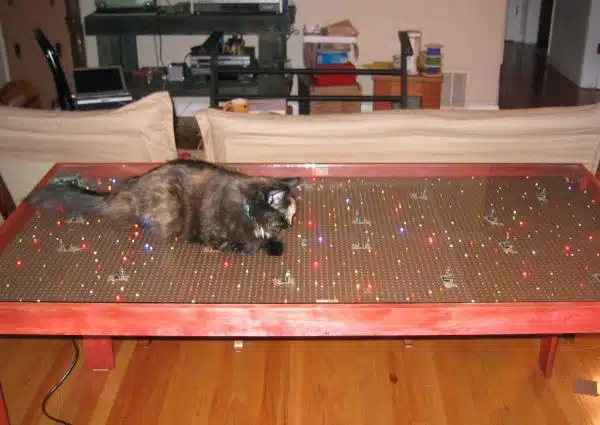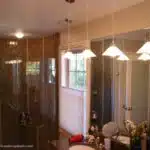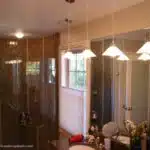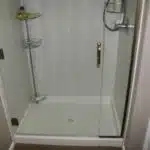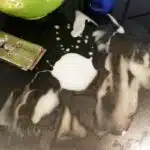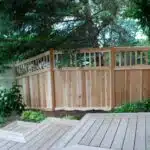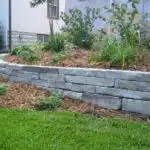Frosting glass is a widely popular technique that adds a touch of elegance to any home or office decor. The frosted effect on glass offers both privacy and aesthetic appeal, making it an ideal choice for doors, windows, shower enclosures, and other glass surfaces. As an expert in the field of glass frosting, I am pleased to share my knowledge and experience on how to frost glass effectively.
To achieve the perfect frosted look on any glass surface, one must follow certain steps carefully. These steps involve using the right tools and materials to create a smooth and even coat of frosting. Additionally, it is essential to understand the different types of frosting techniques available in order to choose the appropriate method for each specific project. Whether you are looking to enhance your home’s interior design or add a unique touch to your office space, mastering the art of glass frosting can be a valuable skill that will serve you well for years to come.
Understanding The Benefits Of Glass Frosting
As a glass frosting expert, I can attest to the numerous advantages that come with this decorative technique. Glass frosting has become increasingly popular due to its ability to transform ordinary glass surfaces into elegant pieces of art. When it comes to applications, the possibilities are endless. From shower doors and windows to office partitions and retail displays, glass frosting adds a touch of sophistication and privacy while still allowing natural light to flood into your space.
One of the most significant benefits of glass frosting is its ability to provide privacy without sacrificing natural light. This makes it an ideal choice for spaces such as bathrooms or offices where privacy is essential but natural light is desired. Additionally, modern-day advancements have made it possible for glass frostings to be customized according to individual preferences, including patterns, designs, and colors.
Another advantage of glass frosting is its low maintenance requirements. Unlike other decorative techniques that require regular upkeep or replacement due to wear and tear, once installed correctly, glass frosting lasts for years with minimal maintenance required. With these benefits in mind, it’s no surprise that homeowners and business owners alike are turning towards this technique as a cost-effective solution for their interior design needs.
Moving on from understanding the benefits of glass frosting, let’s take a look at the tools and materials needed for this project.
Tools And Materials Needed For Glass Frosting
When it comes to glass frosting, having the right tools and materials is essential for achieving the desired results. Glass frosting techniques can vary depending on the type of glass you are working with, but there are some DIY glass frosting tips that can be applied across the board. Before getting started, make sure you have all the necessary equipment on hand.
One of the most important tools for glass frosting is a sandblaster. This machine uses compressed air to blast a fine abrasive material onto the surface of the glass, creating a frosted appearance. Other tools that may be needed include a spray bottle filled with water, masking tape to outline designs or protect certain areas of the glass from being frosted, and safety glasses to protect your eyes from debris.
In addition to tools, there are also specific materials that are crucial for successful glass frosting. The abrasive material used in sandblasting can range from silicon carbide to aluminum oxide, depending on what type of finish you desire. It’s also important to use a high-quality masking tape that will adhere well to the surface of the glass without leaving any residue behind. By having these tools and materials at your disposal, you’ll be well-equipped to achieve beautiful frosted glass creations.
Moving forward into choosing the right type of glass for frosting, it’s important to consider both transparency and texture. Different types of glass will have different levels of opacity when frosted, so it’s important to choose one that fits your needs. Additionally, some types of textured or patterned glass might not lend themselves well to certain frosting techniques. To achieve optimal results, it’s best to experiment with different types of glass until you find one that works best with your preferred method of frosting.
Choosing The Right Type Of Glass For Frosting
Frosting glass is a popular decorative technique for adding visual interest to any glass surface. Different types of glass can be used for frosting, and the design, pattern, and coating chosen can all play a role in the final look and feel of the glass. Choosing the right design for frosting glass can be a challenge, as there are an array of options available. Patterning glass can add texture, depth, and sophistication, while coatings can be used to provide protection from the elements and other damage. When selecting the right type of glass for frosting, it is important to consider the designs, patterns, and coatings that will best suit the desired outcome.
Designs
When it comes to choosing the right type of glass for frosting, designs play a crucial role in achieving the desired effect. Frosted glass designs come in a variety of shapes and patterns, including geometric shapes and nature-inspired patterns. Geometric shapes are popular choices for modern and contemporary styles, while nature-inspired patterns offer a more organic and natural look.
Geometric shapes can range from simple lines and angles to intricate and complex designs. These designs are perfect for those who prefer clean and minimalist aesthetics. Popular geometric shapes include triangles, squares, circles, diamonds, hexagons, and rectangles. These shapes can be arranged in different ways to create unique patterns that add visual interest to any space.
Nature-inspired patterns are often chosen by those who want to bring the beauty of the outdoors inside their homes or offices. These designs can include floral motifs, leaves, vines, trees, and even animals. Nature-inspired frosted glass designs provide a calming and relaxing ambiance that helps reduce stress levels while adding an element of serenity to any room.
In conclusion, choosing the right design for your frosted glass is essential in achieving the desired effect you want for your space. Whether you opt for geometric shapes or nature-inspired patterns, each design offers its unique advantages that cater to different preferences and styles. By understanding these design options thoroughly, you’ll be able to elevate your interior décor game with frosted glass that looks both stunningly beautiful and sophisticated at the same time!
Patterns
When it comes to choosing the right type of glass for frosting, patterns are also a crucial factor to consider. Frosted glass patterns come in a wide range of designs that offer unique ideas for creating an elegant and sophisticated look for any space. These patterns can add character, texture, and depth to plain glass surfaces, providing a stunning visual effect.
Frosted glass patterns can be used to create different moods and styles for various settings. For instance, intricate floral motifs or organic leafy designs are perfect for adding a touch of nature to interiors. The delicate yet detailed frosted glass patterns bring a sense of calmness and serenity that helps reduce stress levels while creating an inviting atmosphere.
Apart from nature-inspired designs, there are plenty of other unique design ideas available when it comes to frosted glass patterns. Geometric shapes such as circles, squares, hexagons, and triangles arranged in different ways can create visually appealing effects that add sophistication to modern interiors. Additionally, abstract designs like swirls or waves can provide an artistic touch that exudes creativity and elegance.
In summary, the selection of frosted glass patterns is critical in achieving the desired effect you want for your space. Whether you opt for nature-inspired motifs or geometric shapes or abstract designs, each pattern offers its unique advantages that cater to different preferences and styles. By exploring these options thoroughly, you’ll find the perfect frosted glass pattern that adds both beauty and functionality to your interior décor.
Coatings
When it comes to choosing the right type of glass for frosting, coatings are another crucial factor to consider. Frosting techniques alone may not be enough to achieve the desired effect you want for your space. Decorative finishes that provide different levels of opacity, texture, and color can enhance the beauty and functionality of frosted glass. The right coating can also help protect your glass from scratches, fingerprints, or stains.
There are various types of coatings available for frosted glass, each with its unique advantages and disadvantages. For instance, acid-etched glass is a popular choice that offers a high level of opacity while retaining transparency in some areas. This technique provides a unique textured surface that diffuses light and creates privacy without sacrificing natural light.
Another option is ceramic fritting, which involves applying ceramic pigments onto the glass surface before firing it in a kiln. This process allows for intricate designs and colors to be applied to the glass while providing excellent durability and resistance to fading or peeling.
In summary, choosing the right coating is essential in achieving both aesthetic and functional benefits when frosting your glass. By exploring different options like acid-etched or ceramic fritting techniques, you can find a coating that suits your needs and elevates your interior décor to the next level.
Preparing The Glass Surface For Frosting
To prepare the glass surface for frosting, it is essential to ensure that it is clean and free of any dirt or debris that may interfere with the frosting process. Cleaning techniques are crucial in achieving a smooth and even frosted finish. One effective way to clean the glass surface is by using a solution of warm water and mild dish soap. This mixture should be gently applied to the glass using a soft cloth or sponge, ensuring that all areas are covered. Once cleaned, rinse the glass thoroughly with warm water and wipe dry with a lint-free cloth.
Surface preparation is another critical step in preparing glass for frosting. It involves creating a slightly rough texture on the surface of the glass to allow the frosting material to adhere better. One way to achieve this is by using sandpaper or emery cloth to lightly sand the surface of the glass. Be careful not to apply too much pressure as this may result in scratches on the glass surface.
It is also important to ensure that any stickers or labels are removed from the glass before beginning the frosting process. Use adhesive removers or rubbing alcohol to remove any stubborn residue left behind after peeling off stickers. In addition, be sure to tape off any areas of the glass that you do not want frost applied to protect them during application.
With proper cleaning techniques and surface preparation, your glass surface will be ready for frosting application using various methods such as applying a self-adhesive frosting film.
Applying A Self-Adhesive Frosting Film
When it comes to frosting glass, there are various methods and techniques that you can use. One of the most popular ways is by applying a self-adhesive frosting film. This type of film is easy to install and can be done in just a few steps. However, it is important to note that cutting corners or using alternative methods may result in an inferior outcome.
To apply the self-adhesive frosting film, you will need a few tools such as a spray bottle filled with water, a squeegee, and a sharp utility knife. Start by cleaning the glass surface thoroughly, removing any dirt or debris. Measure the dimensions of your glass panel and cut the film accordingly using your utility knife. Once you have cut the film to size, spray water onto the glass surface and carefully apply the film from one end to another using your squeegee to prevent air bubbles.
It is important to follow these steps precisely because cutting corners or using alternative methods may lead to an uneven or botched result. To emphasize this point further, here’s an example table showing how cutting corners or using alternative methods can impact the outcome:
| Method | Result |
|---|---|
| Not cleaning the glass surface | Uneven application |
| Using a dull utility knife | Rough edges |
| Rushing through installation | Air bubbles |
In conclusion, applying a self-adhesive frosting film on your glass panel is an easy and cost-effective way to achieve that frosted look without sacrificing natural light. However, make sure that you take your time during installation and follow each step precisely for optimal results. In the next section, we’ll discuss creating a frosting effect with sandblasting – another method worth considering for those wanting more control over their design aesthetic.
Creating A Frosting Effect With Sandblasting
As we have seen, applying a self-adhesive frosting film is a relatively simple way of creating the frosted glass effect. However, there are other techniques available for those looking for a more unique and personalized approach. One such method is sandblasting, which involves using specialized equipment to blast abrasive particles onto the glass surface, creating a frosted effect.
Sandblasting techniques vary depending on the desired result. Fine-grit sandblasting will create a subtle frosted appearance, while coarser grits will produce a more opaque finish. Additionally, stencils can be used to create intricate designs or patterns on the glass surface before sandblasting. This technique requires some skill and practice to master but can result in stunning and personalized works of art.
While sandblasting may not be suitable for everyone due to its specialized equipment and technique requirements, there are alternative methods available for creating a frosted glass effect. For example, using a glass etching cream allows you to achieve a similar result without the need for any specialized equipment. Simply apply the cream to the glass surface and leave it on for the recommended time before rinsing it off with water. The result is an evenly frosted surface that can be further customized with stencils or other design elements.
Moving forward from sandblasting techniques, another popular method of achieving a frosted glass effect is through using a glass etching cream. This versatile product can be applied to any smooth glass surface and creates an even layer of frost that can be customized with various design elements. Whether working on large-scale projects or smaller DIY endeavors, utilizing this type of cream allows you to achieve professional-looking results without any specialized equipment or training required – making it an accessible option for anyone looking to add some personal style to their space through frosted glass accents.
Using A Glass Etching Cream For Frosting
Glass etching cream is a popular way to create a frosted look on glass surfaces. This method is easy to use and produces a professional-looking finish. To start, clean the glass with soap and water and let it dry completely. Next, apply the stencil to the glass where you want the frosted design to appear.
Using stencils is an excellent way to create patterns on your glass surface. There are many different types of stencils available, ranging from simple geometric shapes to intricate designs. You can also make your own stencils using contact paper or vinyl sheets. Simply cut out the design or pattern you want and adhere it to the glass.
Once you have applied the stencil, it’s time to apply the etching cream. Be sure to follow all instructions carefully, as this product can be dangerous if not used properly. Apply a thick layer of cream over the stencil, making sure that it covers all areas evenly. Let it sit for the recommended amount of time before rinsing off with water. With practice, you’ll be able to create beautiful frosted designs using this method.
Transition: Now that we’ve covered how to use a glass etching cream for frosting, let’s move on to another method: applying a spray-on frosting solution.
Applying A Spray-On Frosting Solution
Spray-on frosting solutions are a quick and easy way to add privacy and decoration to your glass surfaces. These products create a frosted appearance that blurs the details of what is behind the glass, while still allowing light to pass through. They are commonly used on shower doors, windows, and glass cabinets.
One of the pros of using spray-on frosting solutions is their ease of application. All you need to do is clean the surface, shake the can well, and spray an even coat from about 8-10 inches away. The product dries quickly, usually within 15 minutes, and can be layered for a more opaque finish. Another benefit is that they are temporary and can be removed easily with solvents like vinegar or rubbing alcohol.
On the other hand, one of the cons of using these solutions is that they may not have a long lifespan. Over time, they can become yellowed or scratched and will need to be reapplied. Additionally, although some products claim to be heat resistant, they may not hold up well in extremely hot environments like near stovetops or fireplaces.
Alternatives to spray-on frosting solutions include adhesive vinyl films or etching creams. Adhesive vinyl films come in a variety of patterns and textures and are applied similarly to wallpaper. Etching creams chemically alter the surface of the glass to create a permanent frosted look. Both alternatives require more time and effort than spray-on solutions but may have longer lifespans.
The next step in achieving a custom design with stencils involves using painter’s tape as a guide for your stencil placement.
Achieving A Custom Design With Stencils
Imagine walking through a beautiful garden filled with unique flowers and plants. Each one has its own intricate design, color scheme, and shape. Just as these natural wonders have their own individuality, so can your frosted glass designs using stencils. Stencil designs provide an easy way to create custom patterns on glass surfaces that are both visually appealing and functional.
Stencils come in a variety of shapes and sizes, from simple geometric shapes to more complex images like animals or flowers. With stencils, you can achieve a professional-looking design without having to spend hours cutting out intricate details by hand. The possibilities for customization are endless when it comes to stencil designs on frosted glass.
Custom patterns can be created by layering different stencils on top of each other or by using multiple colors of frosting spray paint. You can also experiment with different types of stencils such as adhesive vinyl or removable paper stencils for more intricate designs. The key is to find the right balance between creativity and functionality when designing your frosted glass with stencils.
Enhancing the frosted look with color is another way to add personality to your design while maintaining the privacy factor of frosted glass. In the next section, we will explore various techniques for incorporating color into your frosted glass design without sacrificing its functionality as a privacy barrier.
Enhancing The Frosted Look With Color
Adding texture and layering colors are great ways to enhance the frosted look of your glass. These techniques can be used to create unique designs and patterns, adding depth and dimension to your frosted glass. One way to add texture is by using a stencil or masking tape to create a design on the glass. Apply the frosting spray over the stencil or tape, then remove it when dry. This will leave a clear area in the shape of your design, creating a textured effect.
Layering colors is another technique that can be used to create a more dynamic frosted look. Start with a base color, then apply additional layers of different colors over the top. This will create a multi-dimensional effect, with each layer adding depth and interest to the overall design. Experiment with different color combinations and layering techniques until you find the perfect look for your project.
When adding texture or layering colors, it’s important to work in thin layers and allow each layer to fully dry before applying another. This will ensure that each layer adheres properly and doesn’t smudge or smear when additional layers are added. Be patient and take your time, as this process may require multiple coats and touch-ups until you achieve the desired look.
Moving onto maintaining and cleaning frosted glass…
Maintaining And Cleaning Frosted Glass
To maintain the beauty and longevity of your frosted glass, it is important to properly clean it using specific techniques. Regular cleaning will prevent dust and dirt from accumulating on the surface, which can dull the appearance of the frosting. To clean frosted glass, use a soft cloth or sponge with warm water and a mild soap solution. Avoid using abrasive cleaners or scrubbing too hard as this can cause damage to the frosting.
In addition to regular cleaning, applying a protective coating to your frosted glass can help prolong its lifespan and preserve its appearance. Protective coatings act as a barrier against moisture, dirt, and other contaminants that can cause damage over time. There are various types of coatings available in the market, including clear acrylics, urethanes, and epoxies. It is essential to choose the appropriate coating for your specific type of frosted glass to ensure maximum protection.
By following proper cleaning techniques and applying protective coatings, you can keep your frosted glass looking beautiful for years to come. However, if you encounter any common problems such as peeling or chipping of the frosting during maintenance or due to external factors like extreme weather conditions or accidental impact; troubleshooting steps should be taken immediately before it gets worse and affects its overall appearance. In the next section we will discuss some common troubleshooting steps for these issues so you can take action quickly and restore your frosted glass to its original state.
Troubleshooting Common Frosting Problems
Have you encountered some common frosting mistakes while trying to frost glass? Do not worry; it is a normal experience for beginners. In this section, we will discuss some troubleshooting techniques to help you fix those issues.
One of the most common mistakes when frosting glass is leaving bubbles or streaks in the final product. This problem is caused by air trapped between the stencil and the glass surface. To resolve this issue, ensure that you press down firmly on the stencil to eliminate any air pockets. Additionally, use a squeegee to remove any excess water from the stencil’s surface before applying the etching cream.
Another mistake that can occur is over-etching or under-etching of the glass. Over-etching can cause discoloration and unevenness on the glass surface, while under-etching produces a weak design that fades quickly. To avoid these problems, follow instructions carefully when using etching creams and do not leave them on for too long. Always test your etching cream on a small area before applying it to larger surfaces.
To prevent additional frosting problems, below are some tips:
- Ensure that your workspace has proper ventilation.
- Use gloves when handling etching creams.
- Avoid touching any part of the stencil during application.
With these simple troubleshooting techniques and tips, you can achieve successful glass frosting without experiencing any common mistakes. In the next section, we will delve into tips and tricks for successful glass frosting without wasting time or resources!
Tips And Tricks For Successful Glass Frosting
Successful glass frosting can be achieved through a combination of DIY techniques and expert advice. First, it is important to thoroughly clean the glass surface before beginning the frosting process. Any dirt or smudges will show up more prominently under the frost, so take extra care to ensure a pristine surface.
Next, consider using stencils or masking tape to create designs on your frosted glass. This can add an extra level of personalization and creativity to your project. When applying the frosting material, be sure to follow the manufacturer’s instructions closely and apply it evenly for a smooth finish.
Finally, remember that professional glass frosting services are available if you want a high-quality, uniform result without having to do it yourself. However, there is something rewarding about taking on a DIY project and seeing your own handiwork come to life. With these tips and tricks in mind, you can successfully achieve beautiful frosted glass that adds style and elegance to any space.
Diy Vs. Professional Glass Frosting
Let’s face it, DIY frosting techniques can be tempting. With the plethora of online tutorials and easy-to-follow steps, anyone can become a self-proclaimed glass frosting expert in no time. However, what these tutorials fail to mention is the amount of time and effort that goes into perfecting the art of glass etching. Not to mention the potential safety hazards that come with handling chemicals and tools.
On the other hand, professional glass etching services offer a hassle-free option for those seeking high-quality frosted glass. These experts have years of experience and the right tools to achieve precise and intricate designs that cannot be replicated through DIY techniques. Additionally, they use safe materials and follow proper safety protocols to ensure a risk-free service.
While DIY frosting techniques may seem like a cost-effective solution, it is important to consider the long-term value of investing in professional glass etching services. Not only do they provide superior results but also save time and reduce potential risks. It ultimately comes down to personal preference and priorities when deciding between DIY or professional services for your frosted glass needs.
As we have explored the pros and cons of both DIY frosting techniques and professional glass etching services, it is important to keep in mind the creative ways in which frosted glass can be incorporated into decor. From privacy windows to custom signage, frosted glass adds an elegant touch while serving practical purposes. Let’s delve deeper into how frosted glass can elevate your home or business aesthetic in innovative ways.
Exploring Creative Ways To Use Frosted Glass In Decor
After discussing the differences between DIY and professional glass frosting, it’s time to explore the creative ways that frosted glass can be used in decor. Frosted glass is a versatile material that not only offers privacy but also adds a touch of elegance and sophistication to any space. Here are some unique ideas for incorporating frosted glass into your home decor:
- Frosted glass candleholders: Create a cozy ambiance in your home by placing candles inside frosted glass candleholders. The soft glow of the candle will illuminate the frosted design and create a beautiful centerpiece for any room.
- Unique frosted glass art pieces: Transform plain glass into unique art pieces by frosting different patterns or designs onto them. Hang them on walls, use them as dividers, or place them on shelves to add a touch of creativity to your space.
- Frosted glass doors: Replace traditional doors with frosted glass ones to create an open and airy feel while still maintaining privacy. This works especially well for bathrooms or offices.
Incorporating frosted glass into your decor can elevate the look of any room. It not only adds visual interest but also serves practical purposes such as privacy and lighting. With these creative ideas, you can transform your home into a stunning work of art that is both functional and stylish.
As experts in the field of glass frosting, we understand the value that this material brings to interior design. Frosted glass has been used for centuries due to its timeless appeal and versatility. By incorporating it into your decor, you can create a space that is elegant, modern, and functional all at once.
Remember that when using frosted glass in decor, there are endless possibilities for creativity! Don’t be afraid to experiment with different designs or patterns until you find what works best for your space. With its ability to add texture and depth while still providing practical benefits like privacy, it’s easy to see why frosted glass has remained popular for so long.
Conclusion
Frosting glass is a simple and effective way to enhance the privacy, aesthetic appeal, and functionality of glass surfaces in various settings. By using the right tools and techniques, you can achieve a frosted effect that suits your needs and preferences. From self-adhesive films to etching creams and sandblasting equipment, there are several options available for frosting glass.
Before you embark on a DIY project or hire a professional to frost your glass, it’s important to understand the benefits of frosting, choose the right type of glass, prepare the surface properly, and troubleshoot common issues that may arise. Whether you’re looking to create a more private bathroom or office space, add decorative accents to windows or doors, or explore new ways to use frosted glass in home decor, there are countless possibilities for unleashing your creativity with this versatile technique.
In conclusion, as a seasoned expert in glass frosting techniques, I advise anyone interested in achieving stunning frosted effects on their glass surfaces to take their time in understanding the basics involved. By following simple steps such as selecting the appropriate tools and materials needed for each specific project type and applying proper surface preparation methods prior to frosting application will ensure long-lasting results. With these tips and tricks under your belt along with exploring creative ways to use frosted glass in decor; you can confidently frost your own glass projects like a pro!
Image Credits
- “Harley Cat, Before frosting glass” by oskay (featured)

